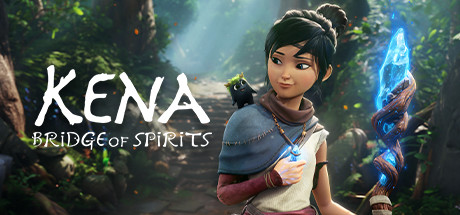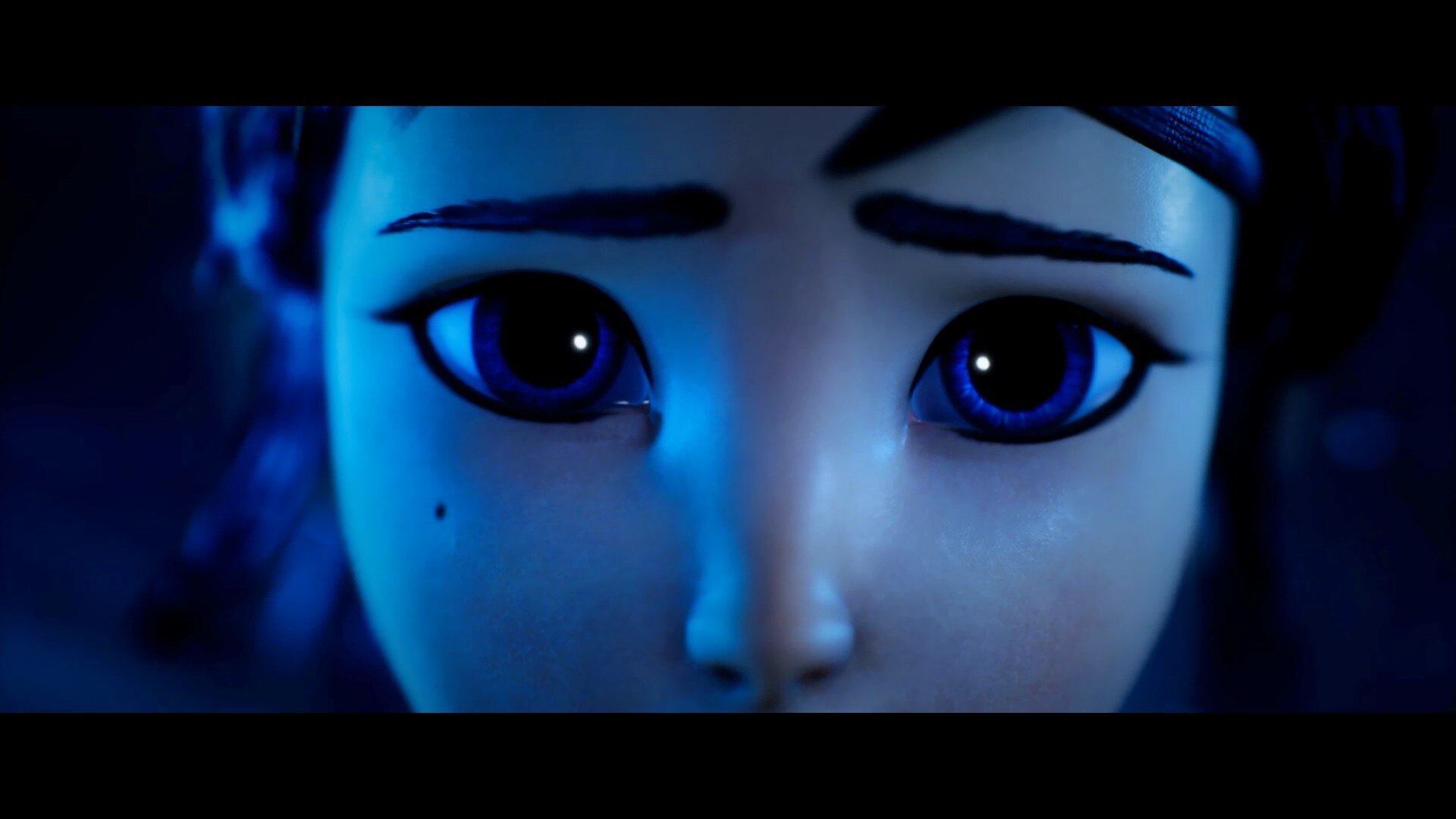
Kena: Bridge of Spirits
Kena: Bridge of Spirits is an astonishing experience. Not only is it one of the most beautiful games I’ve had the chance to play (often compared to an interactive Pixar movie), but it also manages to weave lots of heart-melting, adorable moments into a solid combat system and a deeply moving story. And to top it off, the execution of all these aspects is nearly perfect, which is even more impressive, considering that this little gem was born from the passion of a not-so-big indie studio, and it’s their first Steam release (after being Epic-exclusive for a year).

Playing as Kena was a true delight, mainly because of her wonderful personality. As a Spirit Guide, her role is to help those souls that are still tangled in this world due to their past sufferings, to peacefully cross-over. As such, despite looking very young, she exudes an aura of wisdom, mysticism and calmness. Kena’s warm heart makes her connect to each of the spirits she saves, involving herself in all her missions unconditionally, regardless of what dangers lie ahead. During the conversations that she has with other characters or with her companions, no matter whether they are children, sages, or non-human entities, her gestures and demeanor constantly express a deep respect and politeness, humbleness and compassion towards their past sufferings. For me, she was a long-awaited break from what seems to be an increasing trend in edgy teenage protagonists whose personality actually makes me unable to empathize or connect with them (I’m neither a teenager, nor edgy – I hope). Totally opposite of that, Kena’s admirable character and positivity makes one effortlessly like her.

As great as Kena sounds, the Rot are even more loveable. These are furry, chubby little creatures that accompany Kena in her travels. They are not only the heart of the game, but also its “salt and pepper”, invading almost every frame with their adorable interactions, being capable of melting even the coldest heart with their big round eyes and uttermost sweetness. Besides the fact that they do look and sound extremely cute, a huge part of the gameplay is centered around them. The Rots represent not only one of several types of collectibles that you can gather, but you will even be compelled to find as many of them as possible, since they’re the ones that power up Kena’s abilities in battles. There are 100 of them to gather, some of which are automatically awarded after completing one quest in the game, while most of the others can be found in rather secluded places: under fallen tree logs or rocks, inside chests, pumpkins or drawers.

Initially, besides a dodge ability and a shield spell to parry enemy hits, Kena has a weapon (a magical staff) with a light and a heavy attack, which later in the game she also learns to transform into a bow that can shoot arrows or explosive bombs. The Rots will allow her to cast “rot-infused” versions of these attacks, enhancing them with a substantial damage boost. The more Rots she gathers, the higher the Rot level reached is, and each of these levels gives her one usage of any already unlocked “rot-infused” ability. There are a maximum of 5 tiers, thus a maximum of 5 charges of “rot-infused” spells, and they also recharge whenever she uses her normal attacks on enemies. Basically this functions like a stamina bar with multiple charges, which slowly fills up with “courage” that drops as a result of hitting enemies. The Rots are shy creatures and first need to gather up courage in order to infuse Kena’s abilities with great power by launching themselves forwards toward the enemies and substantially damaging them.

The combat is very well-done, especially in regards to the boss fights. There are a total of 16 bosses to defeat, and each of them has its own unique abilities. Like in the common superhero origin story, the bosses that represent the corrupted forms of the main characters are infused with a supernatural force representing the element they were exposed to when the transformation occurs (for example, Peter Parker becomes Spiderman and gets super strength and super agility after being bitten by a radioactive spider, or Barry Allen becomes The Flash and gets his superspeed as he is struck by a bolt of lightning). In Kena: Bridge of Spirits these boss fights receive a deeper and a more symbolic meaning than in other conventional video games because their mechanics revolve around destroying the binding element that these people kept hanging onto during their moment of death, thus freeing them from what confined them to this world and restricted them to peacefully pass away.

The fighting mechanics for bosses, as well as for regular enemies, are designed in a way that forces Kena to use her whole repertoire of abilities, and not only some that are maybe more suited for your own playstyle. Even on the easiest difficulty (Story mode), where the enemies are considerably weaker, you won’t be able to just hit the boss with regular melee attacks and hope that it will eventually die. Depending on the fight or circumstances, you’ll also need to use Kena’s bow or bombs, but you’ll always have to systematically follow the required mechanics, the only differences from higher difficulty modes being that you’ll take less damage, you’ll recharge your abilities much faster and you will need less iterations to defeat the bosses. Initially, three difficulty modes are available and once you finish your first playthrough you’ll unlock the Master difficulty (in which enemies are a nightmare to defeat), together with a “New Game +” option that can be played on any of these four difficulties and which also brings in some brand new enemy types.

Kena: Bridge of Spirits has a narrative-driven, story-rich gameplay, with ample cutscenes that trigger after each stage of Kena’s journey and after each boss fight. Her initial goal was to reach the Sacred Mountain Shrine, but as soon as she arrives in a nearby village bound to the shrine’s energy and finds it enveloped in a mystical corruption, she offers its inhabitants her help in healing their spirits, and the story shifts the focus towards restoring balance to their small world. The way this corruption came to be, as well as why the villagers’ spirits are unable to move on is revealed in a linear fashion, step by step. There are a lot of little details that can easily be missed during your first playthrough, as you put together all the pieces that eventually form the full picture, but rewatching the cutscenes again in a second playthrough will make you spot all these details and take you to a different level of understanding.

The world of Kena: Bridge of Spirits is a thick and broad forest, covered in abundant green vegetation, with sun rays softly shining through the dense foliage. Atop the mountain or high up in treehouses, the scenery is absolutely splendid. The main paths and points of interest are marked on the map, but there are also plenty of side-routes to explore, most of them harboring various collectibles. The attention to detail put into creating such a magnificent environment is impressive, but the same amount of attention was given to the Rot dynamics. Some will follow Kena and circle around her when she stops, others will wait for her ahead, resting on various structures found nearby. The Rots arrange themselves differently depending on what they can find in the environment. The unpredictable and always surprising positioning that they choose makes them appear like a single living entity. They can also be individually customized with different hats that you can gather during your journey. The soundtrack is as exquisite as all the other aspects of the game, extremely touching especially during cutscenes.

Kena: Bridge of Spirits is a one-of-a-kind game, a true work of art that deserves absolute praise in all aspects. For a ~15h story, the price of $40 might seem a bit too steep, yet I truly feel that this price can be justified by the amount of love and effort put into creating such a masterpiece.